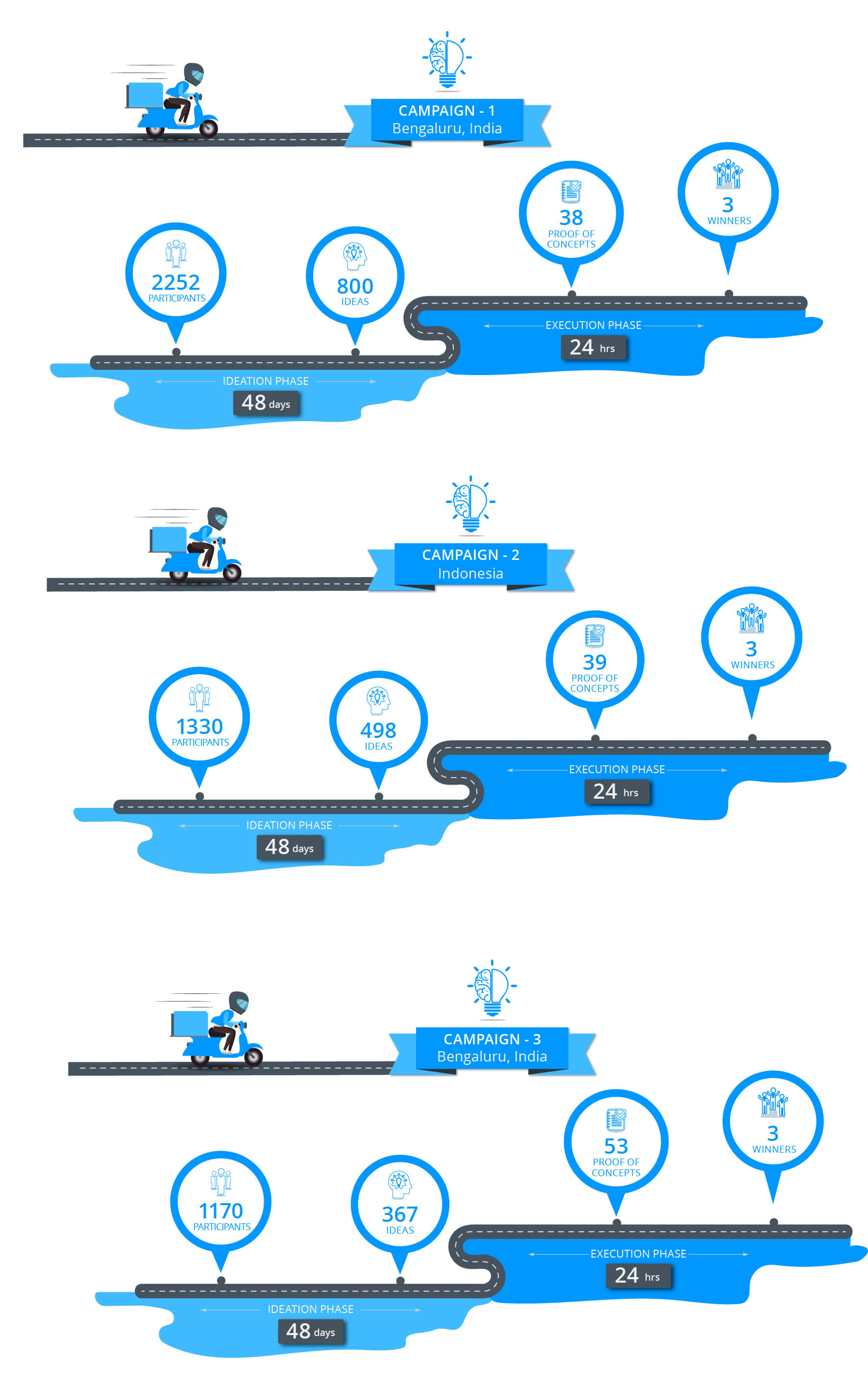Case Study
GO-JEK, one of the fastest-growing Indonesian startups, which has innovation, speed and social impact as its three founding pillars, decided to test the waters with the model of open innovation by partnering with HackerEarth.
After three successful innovation campaigns, GO-JEK ended up with 130 proofs of concept.
GO-JEK is an Indonesian hyperlocal transport, logistics, and payments startup founded in 2010. It aims to improve the welfare of workers in Indonesia’s vast informal sector. Funded by Sequoia Capital, Yuri Milner’s DST global, KKR, Warburg Pincus, Capital Group, and others, GO-JEK’s mission is formalising the informal sector to provide a one-stop mobile application for the daily needs of Indonesia, Southeast Asia’s biggest economy.
HackerEarth partnered with GO-JEK to
“HackerEarth helped us in getting the right audience as promised. The overall responsiveness, efficiency, and flexibility to changes stood out.”
GO-JEK Team,
In the process of discovery, GO-JEK enumerated the areas that would have an immediate and lasting impact on its business. GO-JEK selected the three main avenues and proposed them as the themes of innovation.
GO-JEK decided to open up the ideation phase to HackerEarth’s developer community. Participants were invited to submit their ideas on any of the three themes. This ideation phase lasted for about 41 days. There were a total of 1600+ ideas submitted from 4700+ participants. A total of 1600+ ideas were submitted by 4700+ participants.

The 130 shortlisted teams were invited for a 24-hour offline hackathon. Each team built a proof of concept (PoC).

An AI bot that helps a team organise outings and casual and formal meetings: It assigns routes, so individuals located close by get to pool travel during transit. On reaching the venue, the bot also acts as a waiter and you can order food (for yourself or someone else at your table) and make it context aware to remember any allergies or preferences and pay/split the bill without any awkward counting.
A native map for GO-JEK that harnesses the power of location data from partner drivers: It eliminates the need for third-party services such as the Google Distance Matrix service which is costly or street maps which are less reliable as the data in OSM is not updated at regular intervals. The system can be used to predict more accurate travel times and other service times which are dependent on it, leading to more efficient business models and better customer experience.
An ML-based application that intelligently incentivises and penalises a driver based on his driving style: The data from the driver’s android phone allows the company to extract rich metrics about the driving style of the driver, such as acceleration events, hard braking, sharp turns, etc., which can be used to train machine learning models.